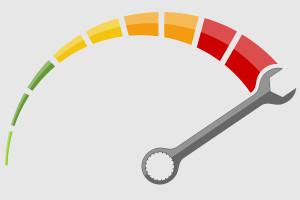Content Management Systems (CMS) allow us to easily create and manage content on a website without the need for programming. It is great for teams with multiple members working together on the same website. CMS platforms provide customization features like templates and extensions to change the look and feel of a website, they also come with in-built security features to keep the website safe from malicious attacks.
This article dives into the functions and benefits of using a CMS, we’ll also be comparing popular Content Management Systems both full stack and headless to help understand which CMS is suitable to what conditions.
This is a sponsored article by Vultr. Vultr is the world’s largest privately-held cloud computing platform. A favorite with developers, Vultr has served over 1.5 million customers across 185 countries with flexible, scalable, global Cloud Compute, Cloud GPU, Bare Metal, and Cloud Storage solutions. Learn more about Vultr.
Understanding CMS
CMS come with an intuitive interface for users to easily publish, edit, or delete content such as text, video, images, and documents on a website. All the content is typically stored in a database. These platforms simplify the process of website management by separating content from design, allowing users to focus on content with any programming skills.
Functions and benefits of using a CMS
CMS platforms offer a wide range of functions and benefits that optimize web development and management.
- Content Creation: Users can easily create and publish various types of content including text, images, videos, and documents using a What You See Is What You Get (WYSIWYG) editor.
- Content Management: Users can easily organize and categorize content, making it easier to navigate and search for information on the website.
- User Permission: Administrators can define user roles and permissions, controlling who can access, edit, and publish content on the website.
- Scalability: CMS platforms are scalable to handle a large number of visitors, allowing websites to grow and expand in terms of content and functionality without having significant performance issues.
- SEO Optimization: CMS platforms include built-in SEO tools and features to improve the website’s visibility and ranking on Search Engine Results Pages (SERPs).
Comparing Popular Full Stack CMS Platforms
Full-Stack CMS platforms integrate both the content management and content presentation layers into a single system. It usually has a user interface for managing content and tools for building the front-end presentation of the website.
This section compares two of the most widely known and used full-stack CMS platforms. Each CMS platform offers its own set of strengths and limitations, making it crucial to choose the one that best aligns with the user’s specific needs and technical expertise.
WordPress
WordPress is one of the most popular CMS platforms, mostly for its ease of use and extensive customization options. To get started with WordPress, Learn How to SuperCharge WordPress with Vultr.
- Strengths
- Extremely beginner-friendly interface, making it a top choice for users new to website creation.
- Numerous collections of free and paid themes. Serve WordPress content using Vultr Object Storage
- Large and active community for support.
- Optimized blogging platform functionality.
- Target Audience
- Ideal for beginners and users with limited technical knowledge.
- Ideal for blogging platforms and small business websites.
- Limitations
- Security has to be maintained properly due to its widespread use. Harden WordPress security with Vultr
- Less flexible for complex website structures compared to Drupal.
Drupal
Drupal is widely known for its robust security, scalability, and powerful features for complex websites. To get started with Drupal, Deploy Drupal 9 on Vultr.
- Strengths
- Highly secure and scalable, suitable for enterprise-level websites.
- Excellent content organization and user management capabilities.
- Flexible API for custom development.
- Target Audience
- Users with experience who need a secure and scalable platform
- Organizations with complex websites require robust functionality.
- Limitations
- Steep learning curve with a technical interface. Deploy Drupal with Vultr Marketplace Application.
- Small community support compared to WordPress.
- Requires developer knowledge for extensive customization needs.
Comparing Popular Headless CMS platforms
Headless CMS platforms are designed to be content-first; they separate the content management capabilities from the content presentation layer. It provides content via APIs that allow developers to retrieve and display content in any desired format.
This section compares some of the most widely known and used headless CMS platforms. Each CMS platform offers its own set of strengths and limitations, making it crucial to choose the one that best aligns with the user’s specific needs and technical expertise.
Ghost
Ghost CMS is a free, open-source headless CMS platform specifically designed for building blogs and online publications. To get started with Ghost, Deploy Ghost on Vultr
- Strengths
- Lightweight and fast performance, ideal for content-heavy websites.
- User-friendly interface focused on blog production.
- Focus on SEO features and site discoverability.
- Growing community with forums and documentation.
- Target Audience
- Bloggers, journalists, and publishers seeking a fast and focused platform.
- Online publications and content-driven websites.
- Limitations
- Limited functionality compared to all-purpose CMS platforms.
- Not suitable for complex web structures.
- Not many options for themes and plugins.
Strapi
Strapi is also a free, open-source headless CMS platform that separates content management backend from the frontend presentation layer. To get started with Strapi, Deploy Strapi on Vultr
- Strength
- Despite being headless, Strapi provides an admin panel for content creation and management.
- Developers can leverage Strapi’s API to build custom UIs tailored to specific project needs.
- Target Audience
- Strapi is ideal for development teams seeking a customizable and headless CMS.
- Projects requiring a high degree of control over the frontend user interface.
- Limitations
- Steeper learning curve for non-technical users, because of the developer-centric nature of the platform.
- Smaller community, still in the growing phase, leading to fewer resources and troubleshooting options.
Do more with CMS platforms on Vultr
- Bring WordPress to the Edge with Vultr and GeoDNS.
- Deploy Bolt CMS on Vultr.
- Deploy Backdrop CMS on Vultr.
Conclusion
In this article, we explored what Content Management Systems are and their advantages. We also compared widely used full-stack and headless CMS platforms based on their strengths, target audiences, and limitations. CMS platforms allow users to build ready-to-use websites with scalability and security enforcement features.
Vultr is the world’s largest privately-held cloud computing platform. A favorite with developers, Vultr has served over 1.5 million customers across 185 countries with flexible, scalable, global Cloud Compute, Cloud GPU, Bare Metal, and Cloud Storage solutions.







